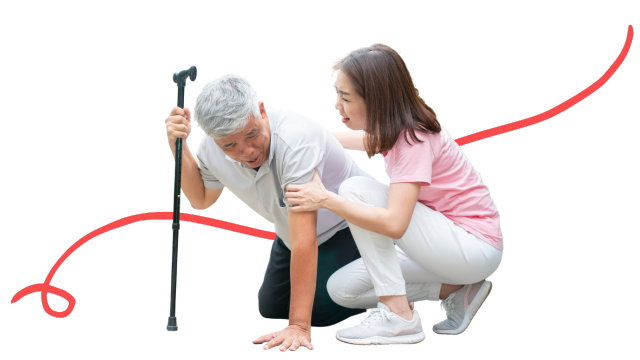About eight months ago, I began having some slight pain in my heel after my daily three-mile walk. I put some ice on it and tried to push through, however the pain kept getting worse. After a few months of this pain, it became so debilitating that it was impacting my ability to have the freedom to do even simple things that I once enjoyed. You’d think someone working in rehab services would be able to put this realization together sooner, but it was only after months of pain where it was impacting my daily life that I finally said, “I need to do something,” and I started physical therapy. After only a few sessions, I’m feeling so much better and can participate in things I love again!
And as if on cue, my physical therapist said, “Why didn’t you to come see me sooner? We could have stopped the pain before it became such a problem.” I immediately thought of my older parents, who commonly complain of pain, and how my first response to them is always, “Have you gone to physical or occupational therapy for this yet?” So clearly, I’m better at giving advice than taking my own!
I know pain is a common concern among older adults on how it affects their quality of life and overall well-being. As we age, the prevalence of chronic conditions and musculoskeletal issues increases, which leads to a higher likelihood of experiencing pain. Fortunately, physical and occupational therapy offers effective strategies for managing pain in older adults.

Older adults may experience various types of pain, including joint pain, arthritis, neuropathic pain, and pain related to chronic conditions like osteoporosis, diabetes, or fibromyalgia. It is essential to address these issues promptly to prevent functional decline and maintain independence. Physical and occupational therapy play critical roles in pain management for older adults.
Physical therapists (PTs) are skilled at assessing the source and severity of pain to develop personalized treatment, improving strength balance and coordination to alleviate pain, and evaluating the need for assistive devices such as canes, walkers, and orthotics to promote safe and independent mobility while reducing pain and improving function.
Occupational therapists (OTs) assess daily activities and recommend modifications to reduce pain and enhance functionality. They may suggest adaptive equipment, ergonomic adjustments, or alternative techniques to minimize pain during activities of daily living (ADLs). Additionally, OTs teach older adults strategies to conserve energy and manage pain during daily activities. By using proper body mechanics and pacing techniques, individuals can accomplish tasks with reduced pain and fatigue. Finally, occupational therapists can identify potential environmental barriers and make recommendations to create a safer and pain-free living space.
Physical and occupational therapists at Legacy Healthcare Services adopt an approach that focuses on overall wellness to pain management in older adults. They provide education on self-management strategies, including pain-relief techniques, relaxation exercises, stress management, and nutrition guidance. By empowering older adults with knowledge and skills, it allows that individual to actively participate in their pain management and improve their overall well-being.
Pain management in older adults requires a comprehensive team approach, and physical therapy and occupational therapy are integral components of that team. By addressing pain through tailored interventions, these therapies help older adults maintain function, independence, and a higher quality of life. Take my advice—address pain sooner and feel better faster because living pain-free leads to living with a lot more freedom!
Interested in learning more about how our wellness programs could impact the lives of seniors in your community? Click the button to connect with our business development team—they’d love to show how this portal can truly make a difference in your community.






